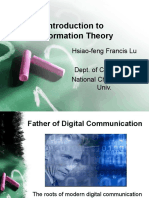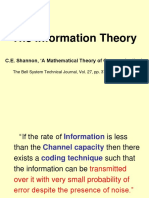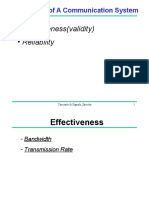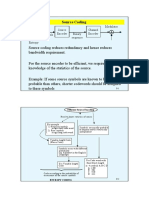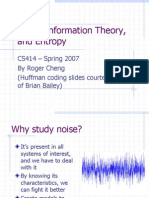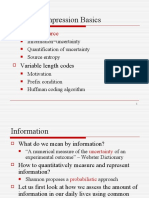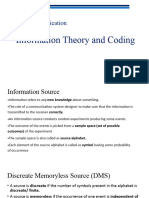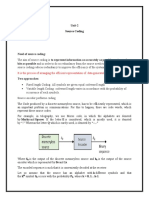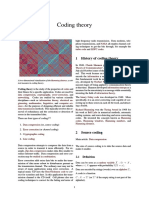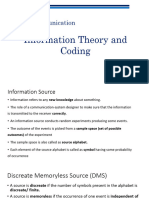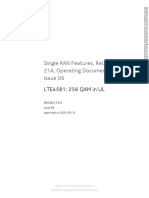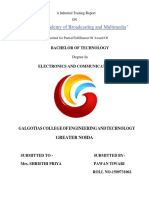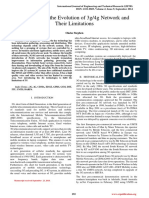0% found this document useful (0 votes)
17 views68 pagesTopic 2 Information and Coding Theory
The document discusses the principles of Information Theory, established by Claude Shannon, which quantifies, stores, and communicates information. It covers applications in computer science, including data compression, error-correcting codes, cryptography, and machine learning. Additionally, it explains concepts like entropy, coding efficiency, and the Huffman coding technique for data compression.
Uploaded by
magrethathanas652Copyright
© © All Rights Reserved
We take content rights seriously. If you suspect this is your content, claim it here.
Available Formats
Download as PDF, TXT or read online on Scribd
0% found this document useful (0 votes)
17 views68 pagesTopic 2 Information and Coding Theory
The document discusses the principles of Information Theory, established by Claude Shannon, which quantifies, stores, and communicates information. It covers applications in computer science, including data compression, error-correcting codes, cryptography, and machine learning. Additionally, it explains concepts like entropy, coding efficiency, and the Huffman coding technique for data compression.
Uploaded by
magrethathanas652Copyright
© © All Rights Reserved
We take content rights seriously. If you suspect this is your content, claim it here.
Available Formats
Download as PDF, TXT or read online on Scribd
/ 68



